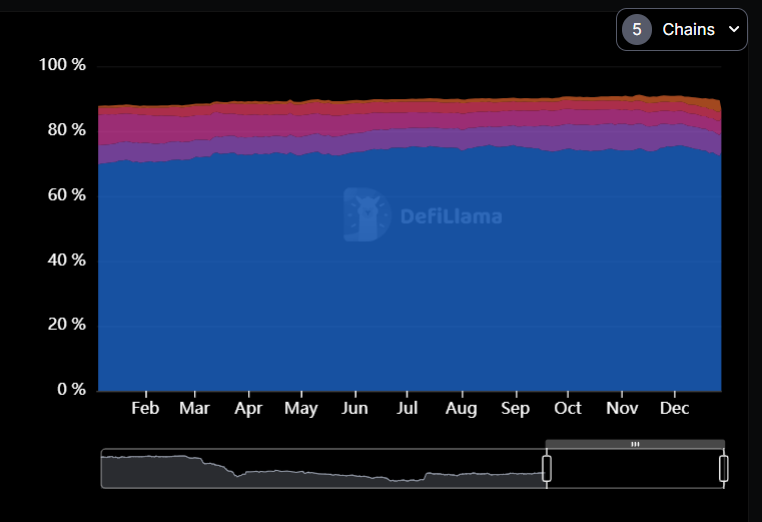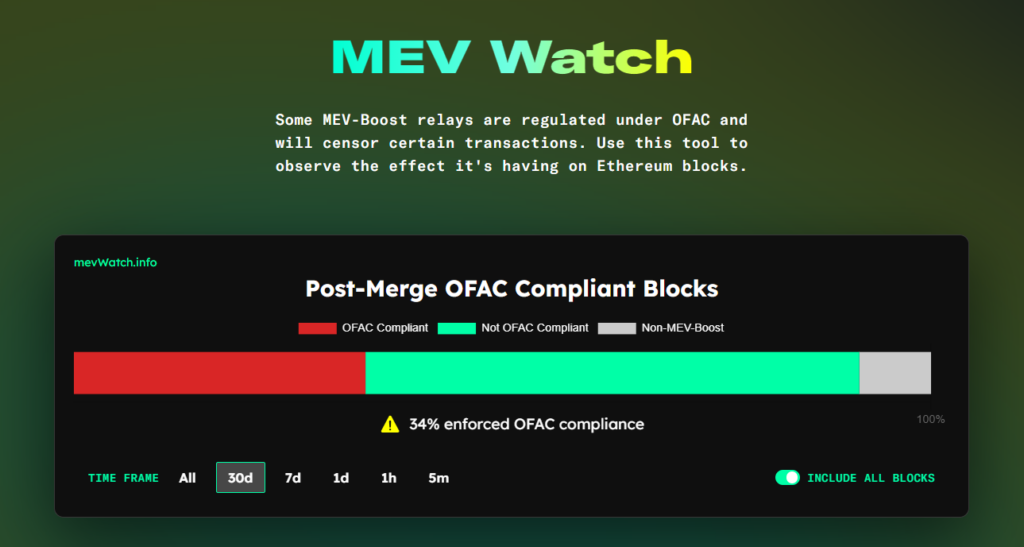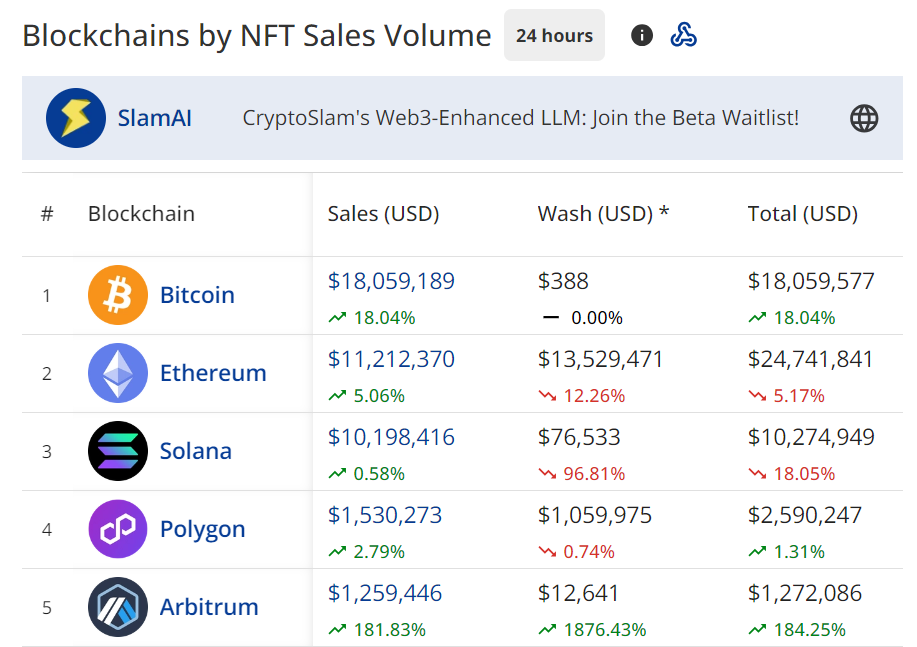Important facts:
-
The number of validators increased by 75% over the year, powered by Shapella.
-
Censorship and centralization risks threaten the network and keep developers vigilant.
The end of the year is approaching and it is time for balance sheets. In a world as rapidly changing as that of cryptocurrencies and their networks, this requires the review and evaluation of a multitude of events and variables that tip the scales between “debits” and “credits”. Ethereum, for example, has experienced a variety of different circumstances in 2023.
What remains is a year of 2022 in which the merger has taken away everything flashes. This year was more about the continuity of a process that had been thought through long before and which is gradually fleshing out stages.
Now this path has not been without difficulties, questions and concerns. Even in the most widely used network for the development of decentralized applications, there was no lack of new developments that delight users with new functionalities. We invite you to review the journey and draw your own conclusions.
Staking and network health
There was an update that influenced Ethereum's year (for the better). Was Shapella was activated on April 12, allowing the withdrawal of Ether (ETH), which validators leave as collateral in exchange for interest for contributing to validating transactions and blocks.
Although some feared the impact this would have on the Mark outGiven the possibility of a mass exodus of validators, the opposite happened. Two months after Shapella, ETH staked had increased by 20%. When this note is completed, the positive balance is already 9 million ETH.
The update had a motivating effect on validatorswho can now manage their ETH to piacere, leave and enter whenever you want. At one point, more than 60,000 users were queued to participate in the staking.
By August 2023, 20% of existing ETH was in the Mark out of the network. By the end of the year, the percentage had already risen to 23.8%, reflecting users' interest in contributing to the secure operation of the network in return for an annual interest payment. Most of them Mark out It comes from pools, that's worth clarifying.
The first consequences of the merger also became apparent over the course of the year. As of this event in September 2022, Ethereum changed proof of work (Proof of Work, PoW or Mining) to Proof of Stake (Proof of Stake, PoS or Staking). At the time of writing this note, ETH supply has decreased at 339,000 ETH thanks to the reduced emissions after the merger and for burning commissions that the network makes after EIP-1559.

The activity distribution on Ethereum also showed an interesting movement towards the second layers (L2) of the network. At the end of the year it was reported in CriptoNoticias Half of Ethereum transactions occur in the second layersa sign that the chosen path to network scalability is beginning to bear fruit.
Selected developments in Ethereum in 2023
In terms of technology news, account abstraction was one of the most important developments in Ethereum over the past year. This improvement included in ERC-4337 is an account standard on Ethereum that bases its operation not on private keys but on smart contracts. This allows a much higher level of customization.
For example, account abstraction allows a user to configure additional security steps for a wallet in which they store large amounts of funds, such as: B. Two-factor authentication, biometrics and a backup account in case he loses access to the main account. In addition, you can configure the use of multiple signatures (multisignature) to approve transactions, make automatic payments, and perform multiple transactions at the same time.

Another important development is that alternatives for developing decentralized staking protocols on Ethereum have emerged. On networks like the SSV network, a way can be found for users to integrate a staking pool and become validators of the network without having to give up their ETH to companies like Lido or Coinbase that have taken over the monopoly Mark out for a long time.
Ethereum and censorship resistance
One of the main criticisms of Ethereum that emerged in 2023, more specifically after the merger, is the increasing censorship of transactions that take place on the network. As explained in recent publications by CriptoNoticias, this is because Some transaction intermediaries are subject to OFAC regulations (Office of Foreign Assets Control) and other government agencies of the United States and other countries.
In simple terms, censoring transactions consists of preventing certain actors from using Ethereum for their operations. For example, those people who have used a specific protocol or interacted with a specific Ethereum address. Censorship of protocols like Tornado Cash, a well-known case of government-level censorship, is also supported by the US Department of Justice.

Above all, As long as there is a percentage of nodes processing censored transactions, they can continue to occur on the network. However, the more nodes that are censored, the harder it will be for the operations in question to get approved, so it will take longer for this to happen.
Aside from that, Another warning point concerns the dominance of a few pools Mark out, which control more than half of the network's validators. So much so that developers have already started working on solutions to stop the monopoly of players like Lido or Coinbase.
Decentralization is of course a central point. Throughout the year, various developers and users of the network followed developments closely and issued warnings when they saw Lido's monopoly go too far, as it did in June.
Security risks in Ethereum
During the year, a few security-related events occurred that put Ethereum users' funds at risk in one way or another.
One of them – perhaps the most relevant – was revealed in December when Open Zeppelin reported two vulnerabilities in Ethereum standards that could lead to ETH theft by impacting different types of smart contracts. A few attacks were recorded exploiting this vulnerability, with the amounts stolen not exceeding $222,000, which is a “small” amount for the nature of the threat.
Another major security incident was the theft of 600 ETH from users who had stored their private keys in an online password manager, LastPass. Although this is no longer an inherent vulnerability in the network, it is a significant loss that may affect more than a million people.
As last, also the attacks of Phish have multiplied. One of them caused losses of 13,000 ETH to a “whale”. holder with a large amount of cryptocurrencies in his possession.
Ordinal numbers, also on Ethereum
The Ordinals protocol was one of the protagonists of the “Bitcoin world” in 2023. The phenomenon was so big that it did not take long for it to be tested on other networks. Ethereum was one of the first, through the so-called Ethscriptions. However, Adoption has not been as high as Bitcoin, particularly due to the costs associated with operating on Ethereum.
Precisely due to the high acceptance of this token standard in Bitcoin, The NFT market on Ethereum has been surpassed in trading volume by Ordinals NFTs on the network created by Satoshi Nakamoto. It should be noted that this comes in a bearish context for NFTs on Ethereum, whose trading volumes only began to show positive numbers in October.

Despite everything, the Ordinals Protocol was not a Bitcoin-only event. The registrations were replicated both in Ethereum and in other of its subsidiary networks and second layers. In fact, the second layer with the highest acceptance and transaction volume, Arbitrum, experienced so much congestion that the network stopped for more than an hour.
Just like NFTs, Smart contracts are no longer the exclusive domain of Ethereum. A new development in Bitcoin, BitVM, makes it easier to execute complex smart contracts on the network. Both BitVM and Ordinals are a sign that Ethereum has more and more competition in the areas where it has always excelled, and now it is Bitcoin, no more, no less, that is breathing down its neck.
Dencun and other possible changes in the future
Vitalik Buterin, one of Ethereum's co-founders and now its best-known developer, spoke this year about achieving “better proof of stake” for Ethereum. This could include the creation of network-owned liquid staking, similar to the service offered by the Lido Staking Pool; reducing the technical burden on validator nodes and a new approach more focused on decentralized staking.
Liquid staking is an interesting point, considering that this service (now offered by centralized services like Lido) is more attractive to users than the network's native staking, as it allows ETH to continue to be used rather than on to bind a smart contract. To such an extent that liquid staking displaced decentralized exchanges (DEX) as the dominant category among DeFi after three years of absolute dominance of this type of protocols.
Beyond these possible future developments, it is currently concrete that the Dencun update is getting closer. As described on this website, this includes EIP-4844, also known as Proto Dank Sharding. Basically, it proposes a more efficient data organization method with less wasted space that will reduce the cost of transactions on Ethereum. After several postponements, it was agreed at the last developer meeting of the year that the update would be tested on test networks from 2024.
The points mentioned in these paragraphs They speak clearly about the immediate goals of Ethereum and its developers: to create a more efficient and cost-effective network, with innate properties that motivate validators to use decentralized solutions. It will be interesting to analyze how these advances unfold, with the aim of reducing the impact of centralization and censorship, Ethereum's biggest threats in 2023.